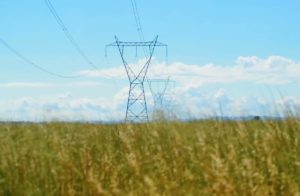The push to fast-track approval of a new high capacity electricity interconnector between South Australia and New South Wales has reached all the way to the top, with the network rule maker hinting at a key rule change as early as next week.
In a strong sign that the country’s energy market rule-makers and regulators are finally trying to catch up with the pace of technology, the Australian Energy Market Commission flagged a likely rule change that puts it into virtual light-speed compared to the glacial process it had been renowned for.
In a statement published on Thursday, the AEMC said it planned to initiate a rule change “next week” aimed at streamlining the regulatory approval process for a $1.5 billion, 330kV link proposed for between Robertstown S.A. and Wagga Wagga in NSW.
The proposed rule change was submitted on Thursday by Energy Security Board chair Kerry Schott, following the Wednesday submission of a final report on the interconnector proposal – dubbed “EnergyConnect” – by its key proponents, transmission network companies ElectraNet and Transgrid.
While there is significant high-level support for the new interconnector – including from the Australian Energy Market Operator, which sees it as a crucial component of its Integrated System Plan – the proposal must now go through a complex and often slow regulatory test known as RIT-T (Regulatory Investment Test for Transmission).
To streamline this process, Dr Schott has proposed amending the National Electricity Rules to reduce the time between the completion of the RIT-T undertaken by ElectraNet, and the determination of the Australian Energy Regulator (AER) on whether ElectraNet can recover the cost of the project.
As AEMC explained on Thursday, the rule request would not remove any steps in the regulatory process, but instead save time by allowing the AER to get started on a cost recovery assessment at the same time as the assessment of whether the project is the best option for consumers.
By Schott’s reckoning, doing these two things as the same time could save up to six months on the RIT-T process, as longs as ElectraNet can provide the AER with all it needs “in a timely manner.”
“The AEMC plans to initiate this rule change next week. The changes proposed by Dr Schott are closely related to those being considered by the AEMC as part of the early implementation of ISP priority projects rule change,” the rule maker said on Thursday.
“The RIT-T dispute process, which must be completed before the AER can start its assessment, would remain unchanged. Under the dispute process, stakeholders have 30 days to lodge a dispute notice about a RIT-T if they have concerns about how a transmission business has applied the test or its cost-benefit calculations.”








